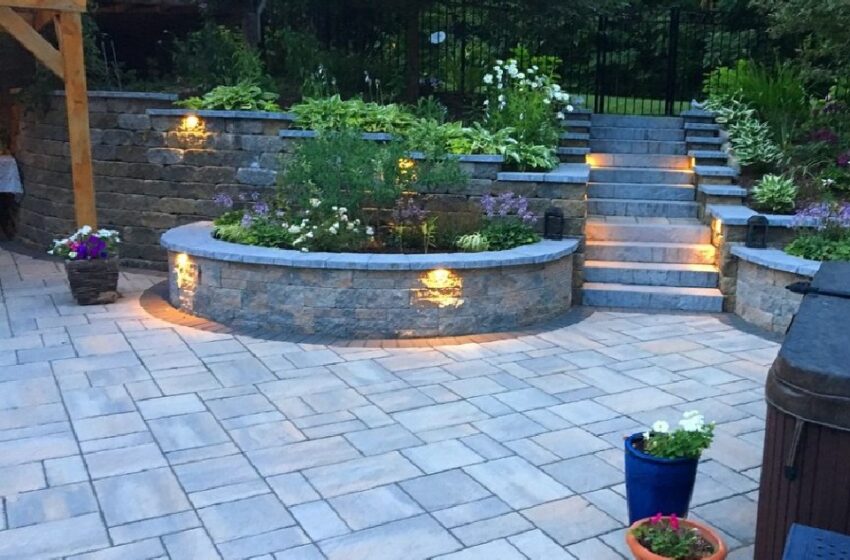Creating A Beautiful & Functional Hardscape Design On A Budget

One of the challenges homeowners face when attempting to landscape their yard is striking the right balance between time/effort and money. Fortunately, creating a beautiful and functional hardscape design is a very achievable goal using creative ideas and affordable materials. Here are some tips to help you get started:
Think Outside The Box
A beautiful garden or yard may only look complete with the right hardscape design Davidson NC. For example, a winding path of stepping stones to a fountain water feature perfectly combines a landscape design’s soft and hard elements.
In addition to adding beauty and defining different areas in the landscape, hardscapes also have many functional benefits. One of the most important is that they prevent soil erosion, which can be a significant problem for home landscapes. They also provide barriers that prevent flood water from reaching the foundation of a house or driveway.
Another great thing about hardscapes is that they often require less maintenance than your landscape’s softer, living parts. It is because they are generally made from weather- and wear-resistant materials. It means they will last much longer than the plants and trees you put into your landscape.
Take A Do-It-Yourself Approach
Hardscapes are the non-living elements of a landscape design and include everything from stones, pavers, and brick to decks, gazebos, and retaining walls. They are typically installed before planting because they define the space and organize the yard. Hardscape materials range in price and durability but can be highly versatile depending on the designers’ choices. Concrete is a common choice because it is highly durable and relatively inexpensive. It can also be colored to match the design scheme of the garden.
Other options for hardscape materials are a wide array of natural materials that can function as walkways and barriers to protect softscape areas from erosion. For instance, a thyme or short-beak sedge lawn can help stabilize soil and create an attractive pathway. These elements can also be used as a screen for a privacy fence or planted on a trellis to form a vine-covered arbor.
Keep It Simple
Using hardscape features to create focal points in your landscape is a great way to add beauty and function. However, it’s essential to remember that you don’t have to overdo things. Small changes can make a big difference.
A consistent aesthetic and robust integration between hardscape and plantings help this simple design to feel inviting. The unified use of materials and the repetition of plants pull the eye around the garden, highlighting key points along the path.
Consider using a form theme for both the plant bedlinen and hardscape elements. Common form themes include geometric, such as circles, squares, and rectangles, and naturalistic, such as curvilinear or meandering lines.
Think About Water
Water is a crucial part of any hardscape design. It adds beauty, sets the mood, and makes the garden more inviting. But it’s also essential to consider how the water will be used and plan accordingly. For example, consider how you’ll use the space if you want to install a pond or fountain. Incorporate seating, plantings, and other features to make it a space where people will spend time.
Using repeated forms in hardscape elements and plants pulls the eye around the garden, creating a sense of movement that leads the user through the landscape. The form themes can be geometric, such as circles, squares, rectangles, or naturalistic, with irregular edges or curvilinear lines. Using repetition also helps to create a sense of continuity between the house and the garden. It is conducive when designing large hardscape areas like a courtyard or terrace.